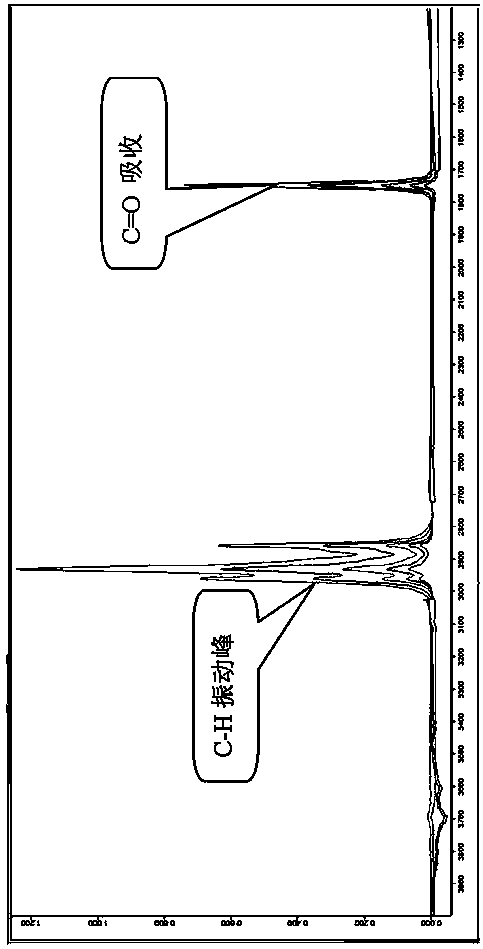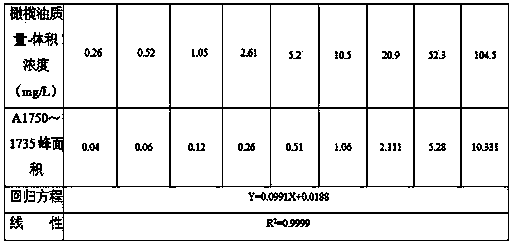Infrared photometric method for quickly measuring oils in water without using chlorofluorocarbon reagents
A technology for rapid determination of CFCs, applied in the field of infrared photometry, to achieve the effect of rapid determination of targets and stable methods
- Summary
- Abstract
- Description
- Claims
- Application Information
AI Technical Summary
Problems solved by technology
Method used
Image
Examples
Embodiment 1
[0031] Using olive oil as a benchmark to make a standard curve, measure the peak area value (instrument integration) of each concentration, the results are shown in Table 1:
[0032] Table 1 A1750~1735—olive oil mass-volume concentration
[0033]
[0034] Infrared spectrum such as figure 1 .
[0035] Example 2 (taking olive oil as a reference, verifying the conversion coefficient of animal and vegetable oil molar concentration into mass-volume concentration determined by the molecular weight of animal and vegetable oil)
Embodiment 2
[0036]a. Take 10 beakers and 10 50mL volumetric flasks, paste the name of animal and vegetable oil (olive oil, soybean oil, palm oil, coconut oil, rapeseed oil), pour a small amount of animal and vegetable oil into the beaker, and pipette each with a micro syringe Put 5 μL of animal and vegetable oil into a volumetric flask with a corresponding label, use carbon disulfide to make up the volume, and use an oil meter to measure the concentration of each prepared solution. Dilute in an appropriate amount, configure a 50mg / L solution, and measure and confirm the concentration with an oil meter. Table 2 lists the average molecular weight of common animal and vegetable oils and their molecular weight after deducting three O-C=O bonds.
[0037] Table 2 The average molecular weight of common animal and vegetable oils and their deduction of O-C=O bond molecular weight
[0038]
[0039] b. Determination of olive oil, soybean oil, palm oil, coconut oil, rapeseed oil 50mg / L solution a...
Embodiment 3
[0045] Table 4 Validation of water sample pretreatment steps of this method and comparison with HJ637-2012 test results
[0046]
PUM
 Login to View More
Login to View More Abstract
Description
Claims
Application Information
 Login to View More
Login to View More - Generate Ideas
- Intellectual Property
- Life Sciences
- Materials
- Tech Scout
- Unparalleled Data Quality
- Higher Quality Content
- 60% Fewer Hallucinations
Browse by: Latest US Patents, China's latest patents, Technical Efficacy Thesaurus, Application Domain, Technology Topic, Popular Technical Reports.
© 2025 PatSnap. All rights reserved.Legal|Privacy policy|Modern Slavery Act Transparency Statement|Sitemap|About US| Contact US: help@patsnap.com



